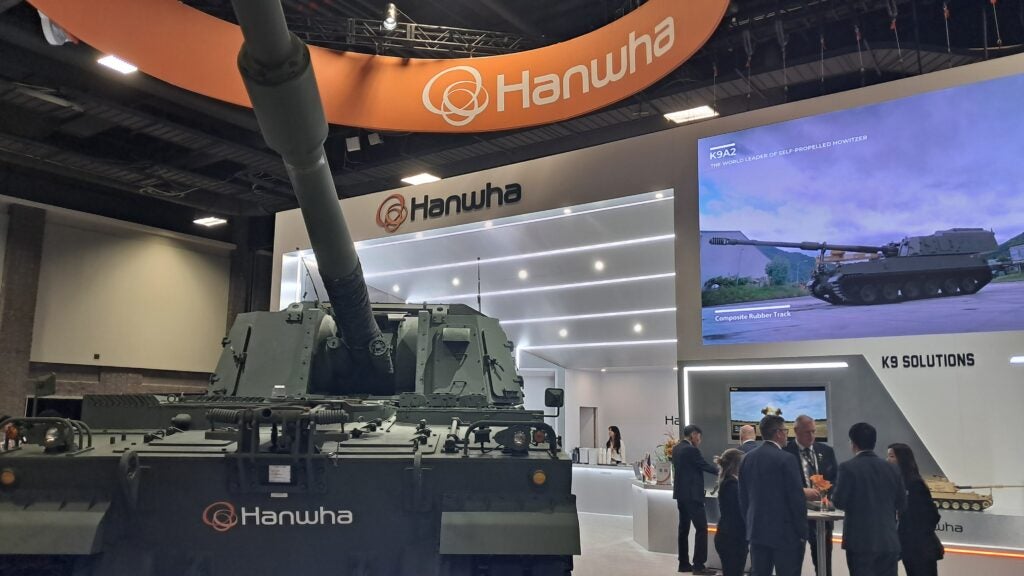AUSA 2024: Hanwha’s K9A2 and Future of Artillery
Producing systems such as the K9 155m self-propelled howitzer, K21 AFV (the “Redback” in Australian service), and the K239 Chunmoo MLRS, Hanwha stands out as one of the biggest names in Korean defense. Their systems have been adopted around the world, with the K9 family ranking among Korea’s most successful defense exports. Poland, India, Estonia, Finland, Turkey and Norway all operate variants of the K9; Australia and Romania are set to join this club soon.
At AUSA 2024, Hanwha displayed the latest version of the K9 – the K9A2. The biggest change compared to the older K9A1 is that the gun features a fully automated turret. The ammunition handling system is fully automated allowing crew size to be cut from five down to three. Of course, manual operation is still available as a backup.
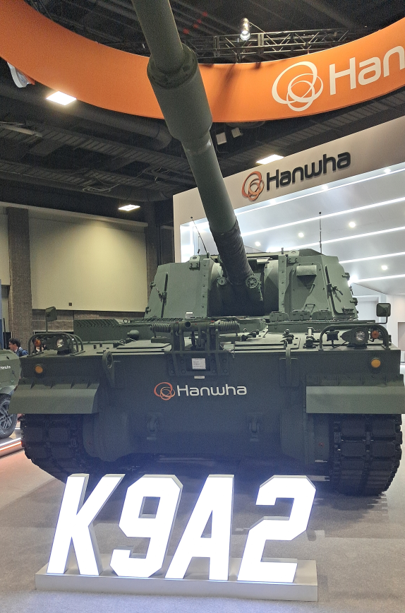
When talking about what sets apart K9 howitzers from other 155mm artillery systems, Simon Humphrey from Hanwha Aerospace UK noted that one significant advantage is logistics:
“[One big advantage is the] quantity of ammunition it can carry compared to our competitors. This carries 48 rounds, which is a really large firing capacity. Some of the wheeled guns that are in service at the moment carry as little as 20 rounds, 21 rounds, so this gives you much more of a battlefield mission before you need to go back to resupply.”
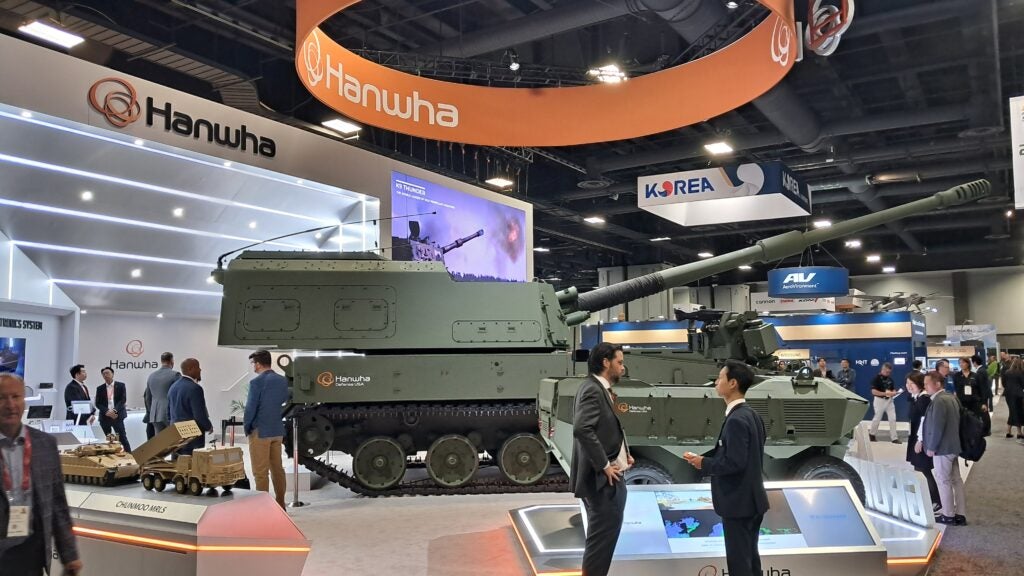
Pasi Pasivirta from Hanwha’s European office elaborated further:
“there’s one design parameter, which is that you have to have 100 rounds per day per gun. So this system can manage it with one refill, which is also sort of a force protection thing. It saves time and increases survivability while also giving you lots of firepower […] We have a fully automated system for restocking the gun called K10. And with that, you can do it in about 15 minutes. But if you don’t have a K10 and you have to do it manually, then it takes about half an hour. [Additionally], Ukraine has proven that the massing of fires capability is still very vital, and it’s very hard to reach a massing of fires capability if you have a very limited amount of ammunition on board.”
According to Simon, this isn’t the only takeway from the ongoing war:
“I think there are many, many lessons. Firstly, a restatement of the criticality of artillery to war fighting, which some nations have lost sight of across a couple of decades. And the second thing is the need to remain survivable, and so you need a system that can get into places that the enemy doesn’t want it to go — get into places where it can hide. It can use the ground effectively. You need to be able to fight the platform rather than operate the platform, and my personal opinion as an artilleryman of many years is that a tracked gun gives you those benefits. We’ve seen footage of a tracked gun in Ukraine that was struck six times by a combination of indirect fire and drones, and the crew walked out alive at the end of it. So you know, survivability and lethality are the two things that are driving artillery right now.”
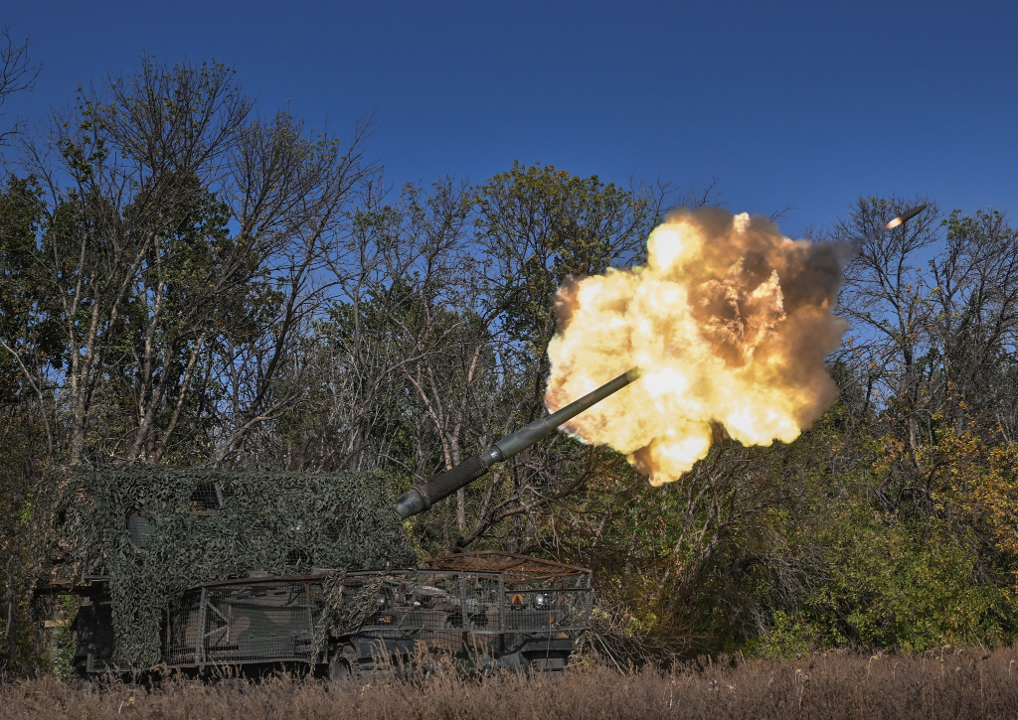
These lessons are already being taken into consideration as Hanwha goes about designing new artillery systems. According to Simon, they also underscore some advantages of K9 howitzers.
“The great thing about the K9, is that there is enough power in the engine, enough armor and protection on it, but you can still bolt other things onto it. So as we’ve become more proficient at counter drone systems, you’ve got the weight envelope here to better put it on the roof, to up-armor the gun and make it more survivable. Some [other] guns are already operating at the limit of their weight envelope meaning you can’t add things on to them.”
While the K9A2 is already a big step in technology, the company is already developing the next version, the K9A3. Simon spoke about some of the things we can expect from future systems:
“The A2 [is] demonstrating a completely automated turret. That’s a real leap forward for artillery. But we’re already starting to explore the opportunities to pair guns which are manned and unmanned. So you start to have a concept of a gun with two other guns tethered to it which will operate as three guns with only two crew. So that’s the sort of boundaries that Hanwha is actively pushing right now. Next, what’s the caliber of barrel you can fit on it? Next, we think it’s 58 caliber, which would improve, increase the range dramatically. […] We’re pushing the boundaries of how you develop artillery.”
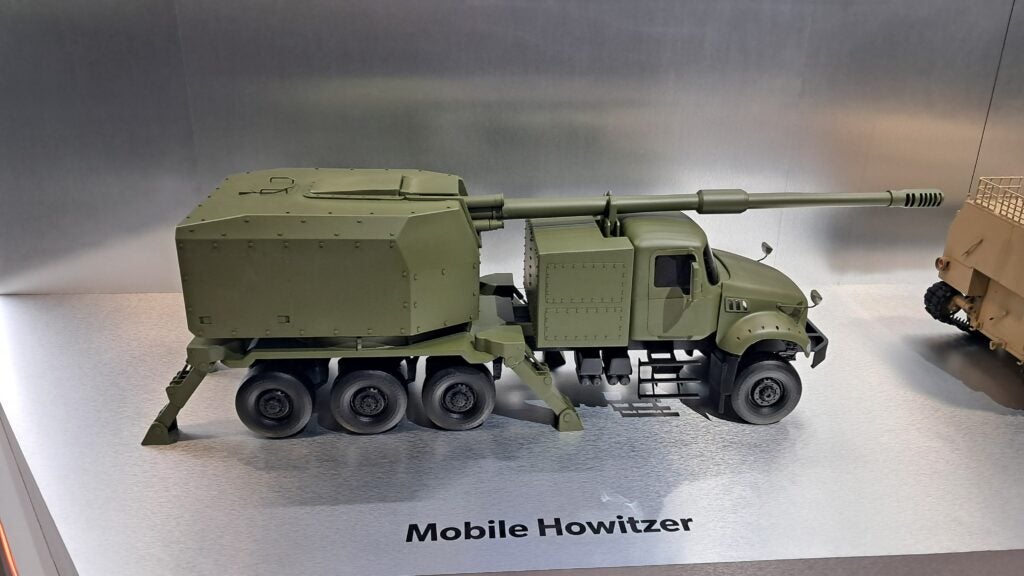
Also on display, was a small mockup of a wheeled artillery system which is currently being worked on. This new system will use the same 155mm gun as the K9 and also incorporate the autonomous tech first seen on the K9A2. A prototype capable of carrying around forty rounds is expected to be ready next year. Pasi spoke about the rationale behind this new system:
“There are certain countries in Europe and the middle east which favor wheeled solutions and they have a very valid reason for that. If you look at artillery across the globe at the moment, you have a tracked solution, and you have a wheeled solution. Different customers think differently about what they need. This [new system] just gives Hanwha greater reach into the market because it now has both choices. […] We are using exactly the same turret structure and same technology, so it will be very low risk development program.”
Besides equipping the ROK military, its possible that the new K9A2 howitzers will soon find their way overseas. Pasi told Overt Defense that while Poland had signed a contract for the K9A1 system, there are ongoing talks about potentially switching out some of those K9A1s for K9A2s.

